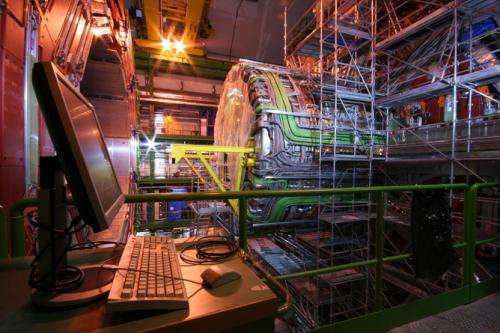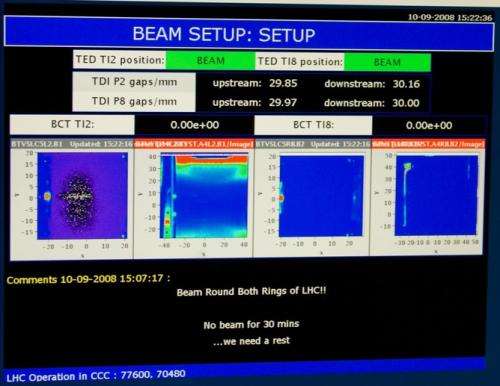LHC celebrates five years of not destroying the world

Five years ago, at breakfast time, the world waited anxiously for news from CERN, the European Organization for Nuclear Research. The first nervy bunch of protons were due to be fired around the European lab's latest and biggest particle accelerator, the Large Hadron Collider (LHC), as it kicked into action.
Some "mercifully deluded people" – as Jeremy Paxman put it – feared the LHC would do no end of mischief. There was talk of planet-swallowing black holes, the transformation of the Earth into a new state of "strange" matter, and even the prospect of the obliteration of the entire universe. But for those of more sensible dispositions, the LHC's first beam was an occasion for great excitement.
As the protons sped all the way round the 27km tunnel under the countryside between Lake Geneva and the Jura Mountains, thousands of physicists and engineers celebrated decades of hard work, incredible ingenuity and sheer ambition. Together they had created the largest-ever scientific experiment.
After the LHC was switched on, project leader Lyn Evans said, "We can now look forward to a new era of understanding about the origins and evolution of the universe."
Operating a massive particle accelerator requires much more than flicking a switch – thousands of individual elements have to all come together, synchronised in time to less than a billionth of a second.
University College London's physicist Jon Butterworth recalls a "particularly bizarre memory" from that day. Relaxing in a Westminster pub after an exhausting LHC event in London, Butterworth found he could follow live updates from his own ATLAS experiment on the pub's TV.
Particle physics continued to make news. The following fortnight's joy turned to dismay as an accident involving six tonnes of liquid helium erupting violently in the tunnel – euphemistically referred to as "the incident" – damaged around half a mile of the collider, closing the LHC for a year.

Since then, besides the brief setback that was "baguette-gate", a bizarre episode when the collider was sabotaged by a baguette-wielding bird, the LHC has been producing great work. Hundreds of scientific papers have been published by the CERN experiments, on topics as diverse as searches for dark matter candidates, the production of the primordial state of matter (known as quark-gluon plasma) and precision measurements of matter-antimatter asymmetries.
However, it was on July 4 last year, that the LHC snared its first major catch with the discovery of the Higgs boson – as one of the most significant scientific finds of the century. The Higgs boson was one of the longest-sought prizes in science – it was almost fifty years ago in 1964 that three groups of theorists laid the ground-work for what would become the final piece of the theory known as the Standard Model of Particle Physics. They proposed an energy field, filling the entire Universe that gives mass to fundamental particles.
This "Higgs mechanism" neatly explained why the weak nuclear force was so weak and why light is able to travel over infinite reaches of space. It also laid the groundwork for the unification of the weak and electromagnetic forces into a single "electroweak" force, in a coup similar to James Clerk-Maxwell's unification of electricity and magnetism in the 19th century.
However, like air, the Higgs field itself is invisible; the only way to know if it is there is to create a disturbance in it, like a breeze or a sound. It was Peter Higgs who first suggested that if the field existed, it would be possible to create such a disturbance, which would show up as a new particle. Hence, the boson was named after him, much to the irritation of some of the other five theorists responsible for the theory.
The LHC's discovery of the Higgs closed a chapter in the development of fundamental physics, placing the keystone into the great arch of the Standard Model. The LHC is currently being upgraded so that in 2015 it will reopen at almost double its previous energy. What every scientist is now aching for is a sign of something new, physics beyond the Standard Model, and most probably beyond our wildest aspirations.
Source: The Conversation
This story is published courtesy of The Conversation (under Creative Commons-Attribution/No derivatives).
![]()



















